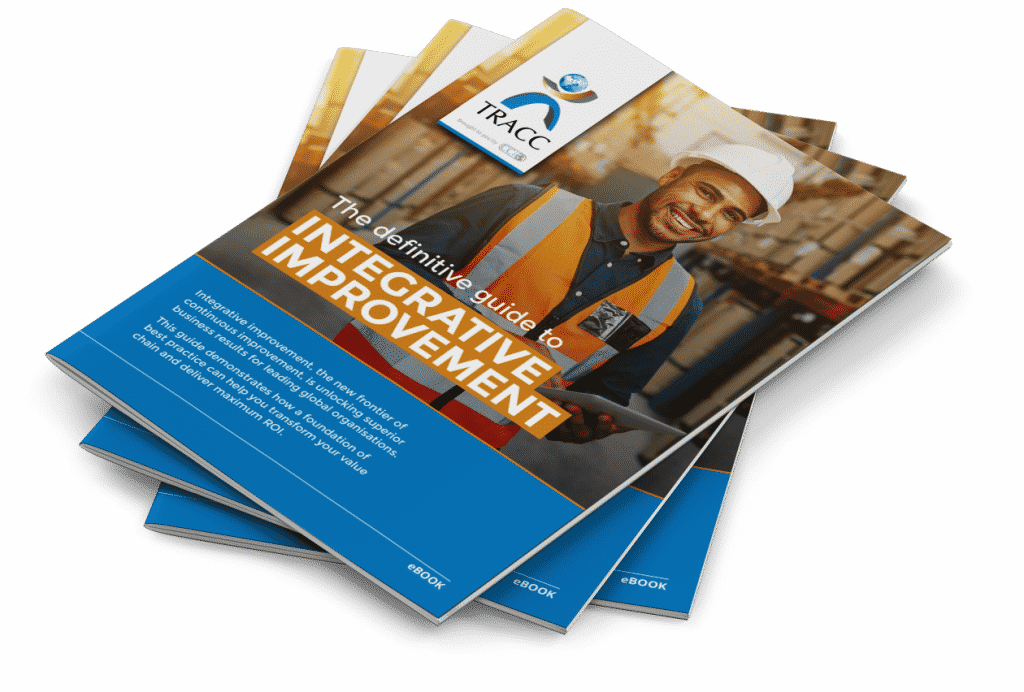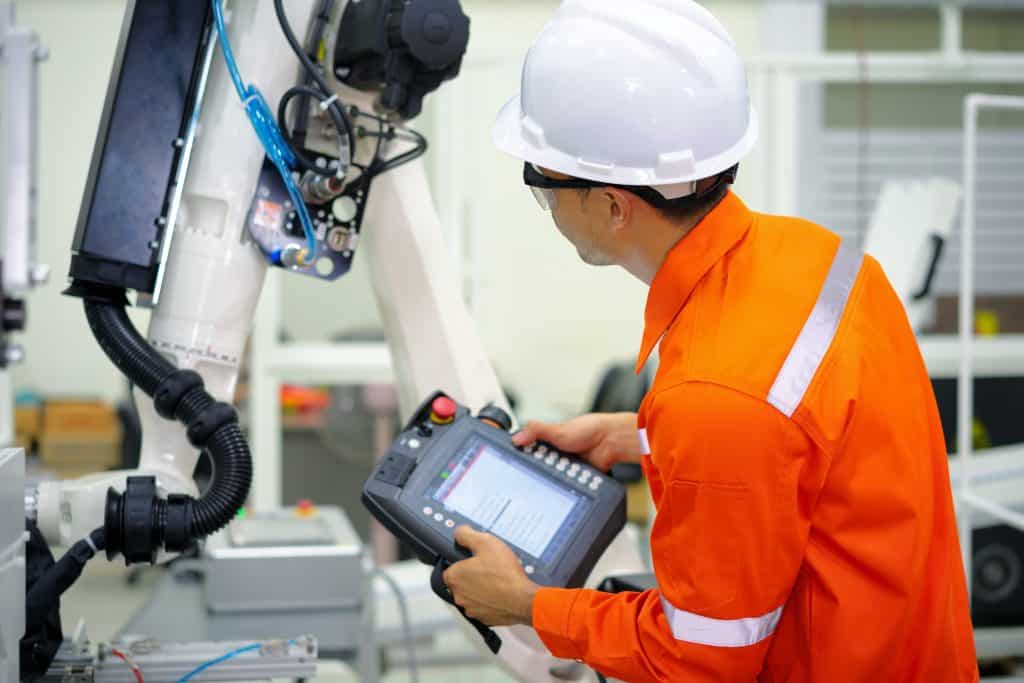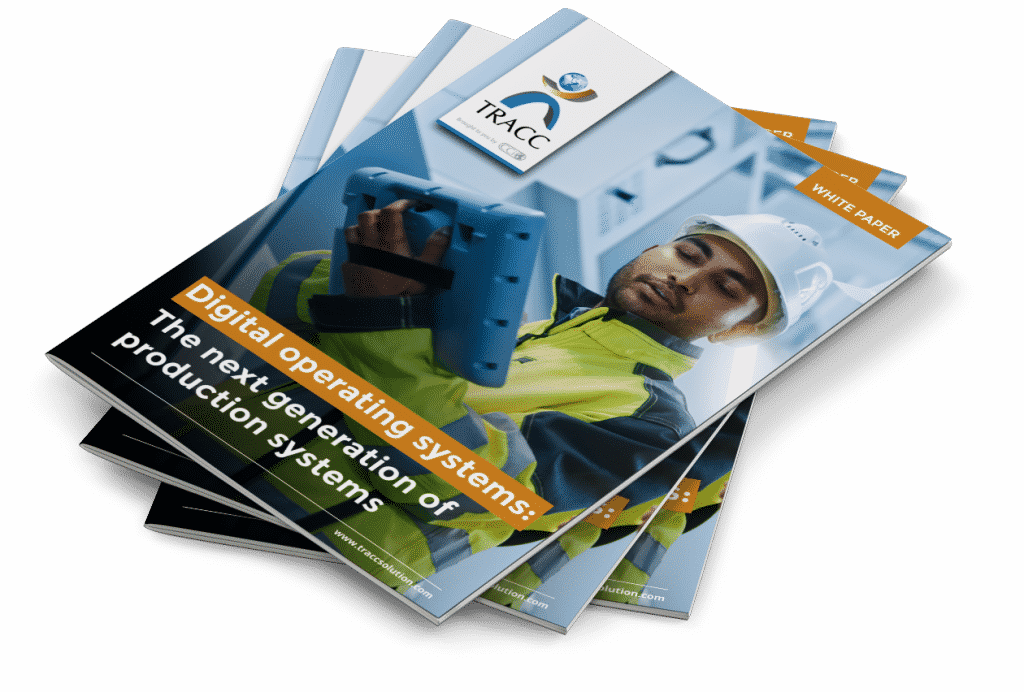
Advanced technology implementation: How to successfully digitise your manufacturing operations for increased productivity
Advanced technology implementation is fast becoming an organisational necessity. Industry 4.0, the digital technology revolution of today’s Information Age, is ushering in a new world of work that requires greater flexibility. Business leaders are being challenged to take advantage of new technologies to scale operations, boost global productivity and stay competitive. The impact of COVID-19 has increased the pace of digitisation and disrupted workplaces everywhere, including within the manufacturing sector.
To stay relevant, manufacturing operations must respond to changing demands by consistently leveraging new technologies and improving their digital maturity. Continuous improvement (CI) is an integral component of the digital transformation journey. Given that technology is constantly advancing, companies striving for a sustainable competitive advantage need to include CI in their technology implementation strategies.
The benefits of advanced technology implementation
Advanced technology implementation adds a smart component to lean-based manufacturing systems which increases operational speed and agility. This intersection of lean and digital is realised in next generation production processes known as digital operating systems (DOS).These automated systems deliver transactional efficiency all along the value chain, enabling business leaders to focus on strategy, staff and shareholders. With access to live operational insights, leadership decisions are based on accurate up-to-the-minute data, which is crucial to maintaining a competitive advantage in the current business climate.
Autonomous systems help streamline processes and simplify daily tasks so that human workers can focus on their key deliverables. However, adopting a DOS can be a disruptive experience and needs to be managed carefully. A fragmented technology implementation creates confusion, uncertainty and disengagement among staff, which hinders production and weakens an organisation’s market position. The transition to a modern production system requires the right foundation: a leadership focus on continuously improving the organisation’s digital capability through synchronised and sequenced work underpinned by best practice.
Before embarking on a digital transformation journey, organisations need to develop a watertight technology implementation strategy. An integrative improvement approach that is CI focused unlocks the potential of digital operations and retains long-term relevance for maximum gain. It provides an actionable philosophy that can help organisations address the daunting prospect of outdated technology platforms, reticent staff and the rapid pace of technological change. The eight principles of the integrative improvement approach can be incorporated into three seamless phases to help companies execute a smooth and results-driven process.
Download the eBook: The definitive guide to integrative improvement to find out more about preparing your organisation for a successful digital transformation.

Three key phases of advanced technology implementation:
- Assess the current level of digital maturity
This first phase investigates the company’s existing technologies and rate of digital adoption against available advancements. The vast range of digital solutions presents an overwhelming array of options. To harness the right technology requires a clear understanding of the organisation’s digital needs and end goal.
Thus, technology implementation strategies need to gather information internally as well as from external sources such as customers, suppliers and competitors to assess the digital gaps in production processes. However, this phase is not only about identifying weaknesses. A comprehensive IT assessment determines the company’s digital strengths and competencies as well as its areas for improvement.
The organisation’s desired end-state is the benchmark against which every step of the digital transformation journey is held up for review. Assessment is thus an ongoing process: Implementing new technology successfully requires consistent evaluation, tweaking and refining.
- Plan the implementation process
The second phase of a technology implementation strategy considers the importance of organisational culture and functional processes. As the digital transformation journey unfolds, skills, systems, processes and leadership styles all undergo necessary and incremental adjustments. This naturally results in a change in company culture too.
Culture is the linchpin in any new initiative that aims to achieve sustainable organisation-wide performance improvement. It is vital that organisations continually assess culture change and manage its stages sequentially to ensure a seamless digital transformation with optimal results.
Functional processes such as IT, HR, quality control and administrative management all play an important role in production and supply chain performance. An integrative improvement approach to implementing advanced technology addresses these functional processes holistically rather than in silos.

Leadership provides crucial direction during implementation and is responsible for steering a steady digital transformation timeline that results in a strong digital culture. An emphasis on collaboration, knowledge-sharing, visibility, skills development and transparent access to data is vital for staff buy-in, organisation-wide digital adoption and subsequent performance improvement.
- Execute, standardise and sustain improvement initiatives
Technology implementation requires sustained effort and attention to move the company from a functional to a process-based digital organisation. To create a built-in digital culture takes time and cannot be achieved overnight. It is of paramount importance that the organisation steadily transforms its technology to avoid any business shocks.
Visibility is key to sustainability. As each step of the implementation strategy is reviewed for results, only the most beneficial and relevant updates will become standard processes. Once standardised, these improved processes are shared across the extended value network in real-time for replication across the global business.
Once again, people are key to optimising an implementation strategy that delivers continuous improvement. To ensure full alignment during a disruptive period and beyond requires strong top-level communication and guidance. Processes, people and technologies need to be synchronised across all functions which calls for workforce upskilling and ongoing investment in training. Sustainability depends on an organisational commitment to people development and skills evolution.
Key focus areas for a successful technology implementation strategy
To introduce, implement and embed new technologies successfully, manufacturing organisations need to:
| 1. Harness the right technologies in response to a comprehensive assessment of the organisation’s digital maturity and technology needs. |
| 2. Undertake deep-level planning across all divisions and functions of the organisation. It is crucial that people and processes are aligned and ready for digital transformation. This includes suppliers and customer networks which require an end-to-end analysis for technology integration. |
| 3. Review the company’s IT architecture to ensure maximum impact throughout the organisation. The IT function is a crucial component of a technology implementation strategy; however, it can only perform optimally if it is dispersed throughout the organisation. If IT exists in a silo, its outdated foundations will not be able to meet the company’s future digital needs. An urgent redesign that is built on a digital vision will embed IT throughout the organisation. |
| 4. Ensure lean, standard work and baseline KPIs are in place to mitigate business shocks. Implementing a digital transformation is challenging and staff hesitation can inhibit progress. Setting KPIs can help ensure that strategic milestones are met and measured correctly. With expectations clarified and systemised, staff can adjust to new procedures and processes timeously without jeopardising production. |
| 5. Configure the factory to enable ‘smart’ processes. The successful configuration of digital and lean will advance organisational performance and leverage new business opportunities. This requires an upgraded use of technologies such as robotics, augmented reality, full-scale integration of operational and information technology (IT-OT integration), and real-time data processing using advanced analytics. |
| 6. Empower leadership to guide the transition to digital by setting an encouraging example. Leaders must subscribe to a digital vision for the company to drive a smooth transformation with staff buy-in. The workforce needs to understand the importance of the technology implementation strategy for the company’s future. In ensuring this progress, leaders can develop and draw on the organisation’s best practice programmes, tools, policies and systems. |
Orchestrating the digital transformation journey for superior results
Managing an advanced technology implementation strategy across a large company requires an orchestration system, to achieve digital transformation successfully. The end-goal for any company implementing new technology systems is digital maturity which encompasses both people and processes. Orchestrating the journey to enable the best performance of DOS will maximise the company’s immediate gains and future potential.
Carefully managed continuous and integrative improvement is thus integral to an advanced technology implementation strategy. A holistic approach that focuses on people and manufacturing processes company-wide, rather than in silos, will enable a seamless transition to digital with better workforce adoption of new technologies. Leadership plays a vital role in steering the digital transformation journey, ensuring the integration of digital and lean, keeping stakeholders included, and elevating performance across the end-to-end value chain.
Download the white paper Digital operating systems: The next generation of production systems and find out more about the drivers of change, and the shape and characteristics of the next generation of production systems.


